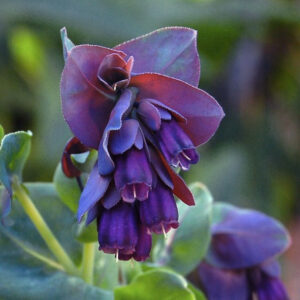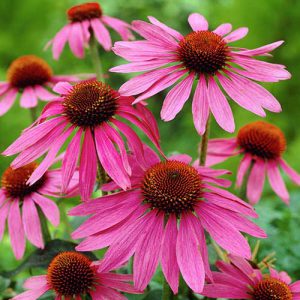- 1-9 pkts $4.50
- 10 pkts FREE
- Express post $12
Pycnanthemum pilosum
HAIRY MOUNTAIN MINT
Pycnanthemum pilosum, commonly called Hairy Mountain Mint, is useful both as an edible herb and as a decorative garden plant.
Not to mention for attracting pollinators to the garden.
Not listed for entry to WA
Very useful in a dry, shaded garden
Hairy Mountain Mint is very useful as a taller background in dry, shaded areas of the flower garden.
Tolerates poor soil & neglect
It is indispensable where trees and shrubs take the goodness out of the soil.
You will find it a tough survivor here, and it can flourish even when neglected.
Quietly attractive & deliciously scented
While Pycnanthemum pilosum is no show pony, it is quietly attractive.
Instead it is grown in difficult spots for its numerous heads of white flowers spotted with purple; the deliciously mint scented foliage which wafts scent every time it is brushed or crushed; and its multiple greyish stems and foliage that form an attractive background height for bolder flowers.
Long blooming white heads spotted with purple
Though individual flower heads are not large and showy, there are so many flowering, branching stems in a clump – that it makes an attractive background haze of upright smoky-grey foliage and white flowers.
Nice floristry fillers for a vase
You can cut abundant stems to use as fillers in a vase as they last well in water.
And even longer when cut, hung upside down, and used as dried flowers.
Use the delightfully aromatic leaves in the kitchen
Fresh leaves can be chopped into salads, fruit salads or drinks, or thrown at the last minute into stir-fries.
Fresh or dried leaves make excellent herbal tea, with a refreshing, mild spearmint flavour.
And an aromatic addition to pot-pourri and insect repelling sachets.
Traditional medicinal herb
Native American Indian First Nations people used Pycnanthemum pilosum to make healing teas and balms.
It was traditionally used for calming the nerves; soothing headaches; settling the stomach; and chasing away a cough.
Bees, butterflies & pollinators cannot resist it
Pycnanthemum pilosum is an abundant food source for bees, butterflies and all flying pollinators. They appreciate both its sweet nectar and long blooming and will be very happy in your garden.
Rabbits & deer avoid it
However rabbits and deer give it a wide berth because of the strong aromatics.
Long-lived, low maintenance perennial clump
60-80cm High, upright stems x 60cm. Wide perennial clump.
Low maintenance plant, requiring only an annual chop back to the ground at then end of autumn or in the early spring.
Rarely if ever troubled by any pests or diseases.
SEED SOWING ADVICE: QUICK & EASY
Suits beginners & gardening with kids
Pycnanthemum pilosum seed can be sown in late summer or autumn / or in late winter and spring – whenever temperatures are suitable.
Or sow indoors at any time when suitable temperatures can be provided.
Sow indoors for quick & early plants:
First sow the seed in a punnet onto the surface of moist, well-drained, good quality seed raising mix.
Tip for sowing fine seed: The seeds of Pycnanthemum pilosum are very fine. So first sieve some seed raising mix, and pop a few pinches into the seed bag, shake well to gather up the seed, and then sow the contents of the bag.
This will allow you to spread the seed better.
Once sown in the punnet, then barely sprinkle the seed with just a little sieved mix or fine vermiculite.
Because light helps these seeds to germinate.
Now thoroughly moisten the punnet by standing it in a shallow water bath and allowing the moisture to percolate up to the surface of the mix from below.
Then place the moist, sown punnet in a warm, well lit position (not in any direct sunlight).
Temperatures of 15-20°C are ideal for rapid and optimum germination.
You can use a heat mat if you have one to maintain optimum temperatures.
Continue to keep consistently moist but not wet by misting from a spray water bottle.
Germination usually takes 14-21 days in suitable conditions.
But do not discard the punnet too quickly, as it is normal for this plant to stagger the seed germination as a safety precaution.
When the seedlings have true leaves prick out into pots and grow on to plant out in the garden during suitable weather.
Seed Count: 200 seeds per pack approx.
(We always aim to exceed the stated seed count, and give a generous serve).
Click here for Nursery Open Days & Open Gardens Information
https://www.gardivalia.com.au/open-gardens
Click here to go back to Seeds Shop
https://www.seedscape.net.au/shop/
Related products
-
Add to WishlistAlready In WishlistAdd to Wishlist
-
Add to WishlistAlready In WishlistAdd to Wishlist
-
Add to WishlistAlready In WishlistAdd to Wishlist
-
Add to WishlistAlready In WishlistAdd to Wishlist





